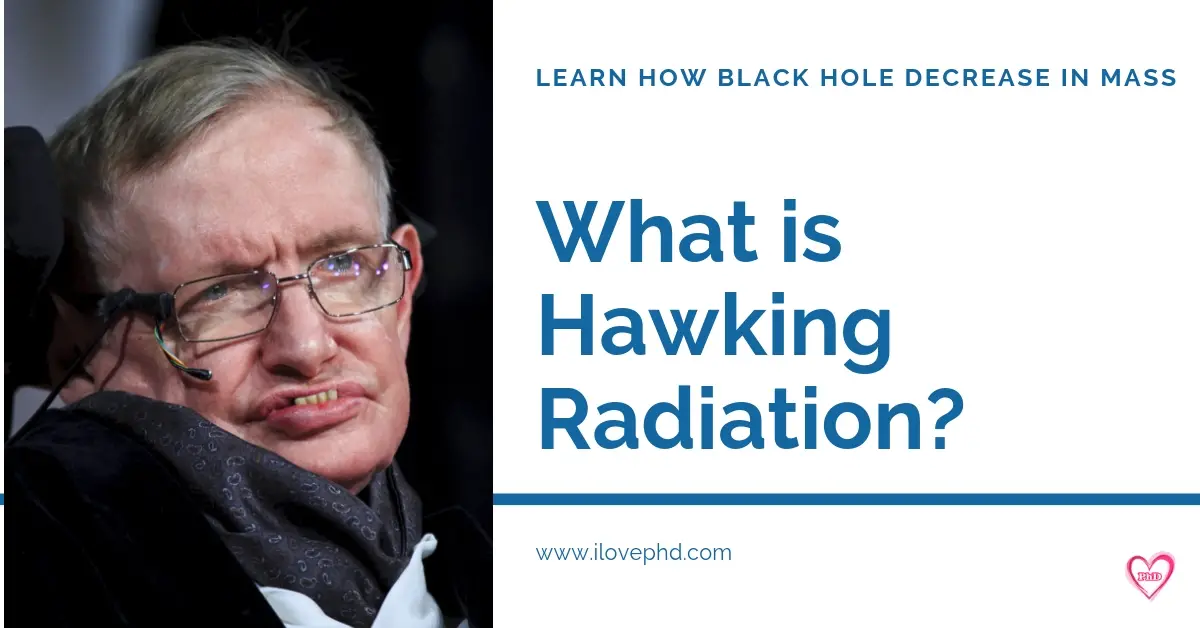Look up at the stars and not down at your feet. Try to make sense of what you see, and wonder about what makes the universe exist. Be curious. -Stephen W. Hawking
What is Hawking radiation?
- Hawking radiation is emission from a Black Hole, as the name suggests, it discovered by Stephen Hawking.
- Theoretically stated that this radiation emitted from just outside the event horizon of a black hole.
- Stephen W. Hawking proposed in 1974 that subatomic particle pairs (photons, neutrinos, and some massive particles) arising naturally near the event horizon may result in one particle’s escaping the vicinity of the black hole while the other particle, of negative energy, disappears into it.
- The flow of particles of negative energy into the black hole reduces its mass until it disappears completely in a final burst of radiation.
- An alternative view of the process is that vacuum fluctuations cause a particle-antiparticle pair to appear close to the event horizon of a black hole.
- One of the pairs falls into the black hole while the other escapes. In order to preserve total energy, the particle that fell into the black hole must have had a negative energy (with respect to an observer far away from the black hole).
- This causes the black hole to lose mass, and, to an outside observer, it would appear that the black hole has just emitted a particle.
- In another model, the process is a quantum tunneling effect, whereby particle-antiparticle pairs will form the vacuum, and one will tunnel outside the event horizon.
Hawking has raised deep questions and triggered many developments in theoretical physics. For example, his developments concerning Hawking radiation and black hole entropy within string theory.
How Black Hole Decrease in Mass
This radiation does not come directly from the black hole itself, but rather is a result of virtual particles being “boosted” by the black hole’s gravitation into becoming real particles.
As the particle-antiparticle pair was produced by the black hole’s gravitational energy, the escape of one of the particles lowers the mass of the black hole.
You Might Also Love
Black Hole Image: NASA Unveiled The First Ever Picture of a Black Hole

